F is for flag: Many area towns’ banners judged harshly in national survey
| Published: 01-16-2023 6:21 PM |
It’s a grand old flag, a high-flying flag, as the song goes — or is it?
With public interest in flags on the rise, many cities and towns across the U.S., including a handful from these parts, have redesigned their flags in the last few years. Recently, 312 of them were ranked and rated in a survey conducted by the North American Vexillological Association, billed as the world’s largest organization of flag enthusiasts and scholars.
That handful from these parts? F, mostly. Aside from Sunderland’s B and Wendell squeaking by with a D, the rest, including Westhampton, Williamsburg and Middlefield in Hampshire County, scored an F. But this is not the time for any head-hanging or wringing of hands — 63% of the flags surveyed flunked. And the overall average came in at a solid D+.
Some 2,800 people nationwide took part in the survey, joining 308 NAVA members. The results can be found on the organization’s website.
At first glance, some of the scores are confusing. Westfield, for instance, flies a very stylized image of rolling hills against a white background with “Westfield” and “community driven” in script. Frankly, the letter F does not spring to mind, but the lettering on the flag is what does it in.
In its free download “Good” Flag, “Bad” Flag, NAVA identifies the five principles of flag design, including the use of meaningful symbolism, sticking to two or three colors, and never, ever, slapping the town seal on the flag or lettering of any kind.
“The flag belongs to everybody, not just city government,” NAVA’s Secretary Ted Kaye said. “Using the town seal or government logo sends the wrong message and leads to poor design.”
“Most flags serve as a recognizable symbol of a place,” Kaye said. “Or as Lee Herold, a flag dealer from Rochester, Minnesota puts it: ‘A flag is a visible symbol of an invisible bond.’ If you agree that that’s the flag’s function, then the simplest design can affirm that.”
Article continues after...
Yesterday's Most Read Articles
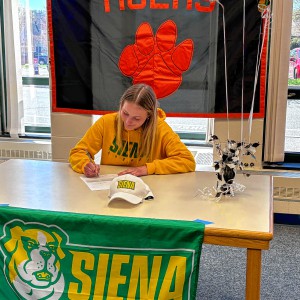 South Hadley’s Lauren Marjanski signs National Letter of Intent to play soccer at Siena College
South Hadley’s Lauren Marjanski signs National Letter of Intent to play soccer at Siena College
 LightHouse Holyoke to buy Gateway City Arts, expand offerings and enrollment at alternative school
LightHouse Holyoke to buy Gateway City Arts, expand offerings and enrollment at alternative school
 Treehouse, Big Brothers Big Sisters turn race schedule snafu into positive
Treehouse, Big Brothers Big Sisters turn race schedule snafu into positive
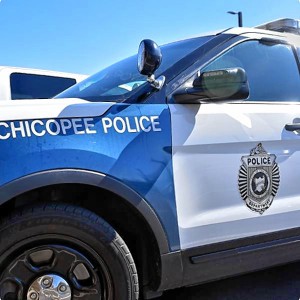 South Hadley man fatally shot in attempted robbery
South Hadley man fatally shot in attempted robbery
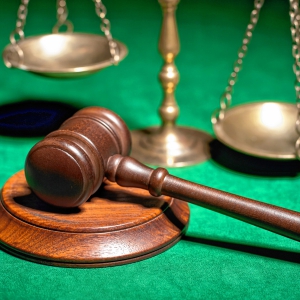 Granby man admits guilt, gets 2½ years in vehicular homicide
Granby man admits guilt, gets 2½ years in vehicular homicide
 Area briefs: Transhealth to celebrate 3 year; Holyoke to plant tree at museum; Documentary film about reparations focus of Unitarian talk
Area briefs: Transhealth to celebrate 3 year; Holyoke to plant tree at museum; Documentary film about reparations focus of Unitarian talk
And nothing vexes a vexillologist more than writing on a flag, which you can’t read from a distance, especially all that “incorporated in 1735” fine print. “Lettering will be seen backwards on the reverse side; KANSAS becomes SASNAK,” said Kaye, unless you sew two separate sides together, which makes the flag thicker and therefore weakens the swagger in its flap.
“If you have to write the name of the town on the flag, your symbolism has failed,” Kaye said.
Never to be confused with the flag-waving zealots of the world, we of western Mass still manage to fly a lot of flags.
The best ones have a certain snap, as the breeze unfurls it and furls it back. The best ones convey something without saying it out loud, simple and compelling, or, as NAVA suggests, a child could draw it from memory.
Side note: Could you draw your own town flag from memory? No fair looking it up on Google. We’ll get back to this.
But don’t these grades of F sting those communities who receive them?
“Let’s be positive here,” NAVA’s Kaye said. “These designs were adopted by well-meaning but misguided people. If that tree is important, perhaps choose a stylized version of the tree. The goal here is not to beat people up, but to help them create something that captures the imagination. There is a correlation between quality of design and how much the flag is flown. If it’s got a bad design, no one will buy it or fly it. The super designs of Chicago and Washington D.C. can be seen flying all over the city. You can’t cross the street in Chicago without seeing one.”
Most Massachusetts towns that failed are sporting, as Kaye says, “a town seal on a bedsheet.” When informed that Whately was one of those places perfect for cycling, Kaye suggested the town seize on that: “Put a bike on it. You’ll remember it’s Whately.”
Sunderland’s simple diagonal rendition of the Connecticut River roaring past grassland and a single tree garnered a B score, while Williamsburg’s idyllic and more detailed scene with an old mill’s water wheel in the foreground with 1771 on it, as the Mill River winds past the steeples of two Congregational churches and onto the red-hued hills in the distance scored an F.
“That’s a postcard, not a flag,” said Kaye, cringing from the sight of the town’s name emblazoned at the bottom.
Williamsburg Town Administrator Nick Caccamo thinks that the survey misses the point. “Our flag is pretty delightful, in a small town kind of way,” he said, “Very inviting, with a varied color scheme.”
Its conception and creation, he said, “is emblematic of Burgy’s volunteer base.”
“It looks nice hanging in the building, and it’ll really catch your eye at the Great Hall of Flags,” said Caccamo, referring to a State House rotunda, where flags from every corner and cranny of the commonwealth hang from the rafters, a breathtaking yet seal-laden exhibition of municipal pride.
Burgy’s flag, as if turns out, was designed expressly for the Hall of Flags by Williamsburg artist and musician Lisa Tucker, who was at the State House when the hand-sewn creation was unveiled. Tucker makes no apologies for the “old-fashioned” mood conveyed in the work, which came out of committee.
“We wanted what we wanted,” she said, “not the wishes of people who don’t live here. And we wanted it to stand out. My dad was a ship captain so I knew about flags.”
Tucker, who moved with her husband to Williamsburg in 1990 from the Williamsburg section of Brooklyn, is unfazed by the F score given. “I knew ahead of time that the flag wouldn’t qualify.”
But F?
“You tend to laugh it off,” said Caccamo. “I look at flag enthusiasts as a very niche bunch. We were never gonna score well.”
“Flags are a mixed bunch,” he continued. “You look at Chicago’s — perfect, iconic, sets a high bar. But is everything supposed to look like Chicago?”
One of the lowest-rated entries in the survey came from Westhampton, who, like a good many, went with the town seal. Behind the seal, a photo of a large tree, alone in a dusky meadow, its branches bare, a sliver of gloaming sky in the distance. But the lunar-like town seal got stamped dead center right over the crown of that straggled old tree and almost seems to have a face.
“So many things,” said Kaye. “You’ve got the seal, for one, and it’s a photograph — it can’t be sewn, it can only be printed.”
Yes, but the clawing branches that the seal failed to block out, now appear to be unruly strands of hair, mad scientist hair, sprouting wildly from the skull of the town seal. The more one looks at it the more weirdly beautiful it becomes, Dali-like in the seal’s features. It also breaks all five of NAVA’s principles — if a child drew this flag from memory, school personnel might be alarmed.
Some of the Fs seem more deserving than others, and you needn’t be a vexillologist to be reaching for your red pencil. The city of Balch Springs, Texas, flies a flag that looks like a business card, as does Pontotoc, Mississippi, with many others cannily resembling billboards on a Little League outfield fence. The flag of Coal Valley Township, Illinois, depicts a shovel, pick and mining helmet suspended in air, about to attack, apparently, two large mounds of lumpy gray coal. Songs have been written.
“There’s a scourge of bad flags and they must be stopped!” cries podcaster and raconteur Roman Mars in his Ted talk “Why City Flags may be the Worst-designed Thing You’ve Never Noticed.”
But in the A section (about 30% of those surveyed) you’ve got a lot of powerful imagery and loads of symbolism. Lincoln, Nebraska’s three-color geometric masterpiece, inspired by a Salvadoran artist’s first glimpse of the city’s skyline, is striking, along with Springfield, Missouri’s embedded crown and Tulsa, Oklahoma’s symbolized homage to its past. “It’s former Indian territory,” said Kaye. “Anyone in Oklahoma will get it immediately.”
Of course, you’d have to look up all that symbolism. Regarded by flag enthusiasts as the greatest of city flags, those of Chicago and Washington D.C., both with their stars and bars, but you’d have to be a true flag scholar to know that the points of Chicago’s four stars stand for 24 events, including the founding of Fort Dearborn and the Chicago Fire.
One thing about the survey: the images you’re looking at are perfectly rectangular and flat. But the flag itself will either be flapping in the wind or hanging down limp like a towel on a fence. To imagine what your flag might look like flapping, there’s a website, FlagWaver, where you copy the flag’s image and watch its undulations till you’re just about ready to burst into song.
Anyway, the sharp angles and stylized shapes lend themselves greatly to all that flapping.
And speaking of seals, our controversial state flag has the state seal hogging all the space on the flag.
“State flags are generally bad,” says Kaye, who has advised committees involved in changing the Massachusetts flag and its confusing symbolism — the Native American warrior, the arm and sword above, the hint of subjugation, the myriad interpretations. “If you change the seal, you automatically change the flag,” he said.

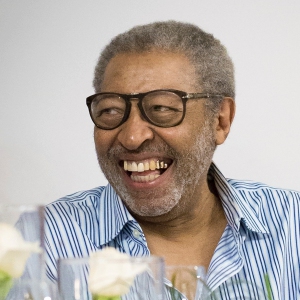 William Strickland, a longtime civil rights activist, scholar and friend of Malcolm X, has died
William Strickland, a longtime civil rights activist, scholar and friend of Malcolm X, has died Advancing water treatment: UMass startup Elateq Inc. wins state grant to deploy new technology
Advancing water treatment: UMass startup Elateq Inc. wins state grant to deploy new technology New Realtor Association CEO looks to work collaboratively to maximize housing options
New Realtor Association CEO looks to work collaboratively to maximize housing options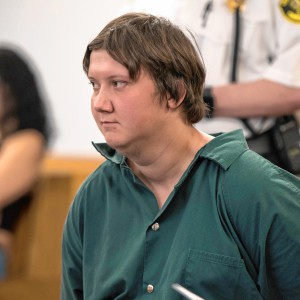 Northampton man will go to trial on first-degree murder charge after plea agreement talks break down
Northampton man will go to trial on first-degree murder charge after plea agreement talks break down 
